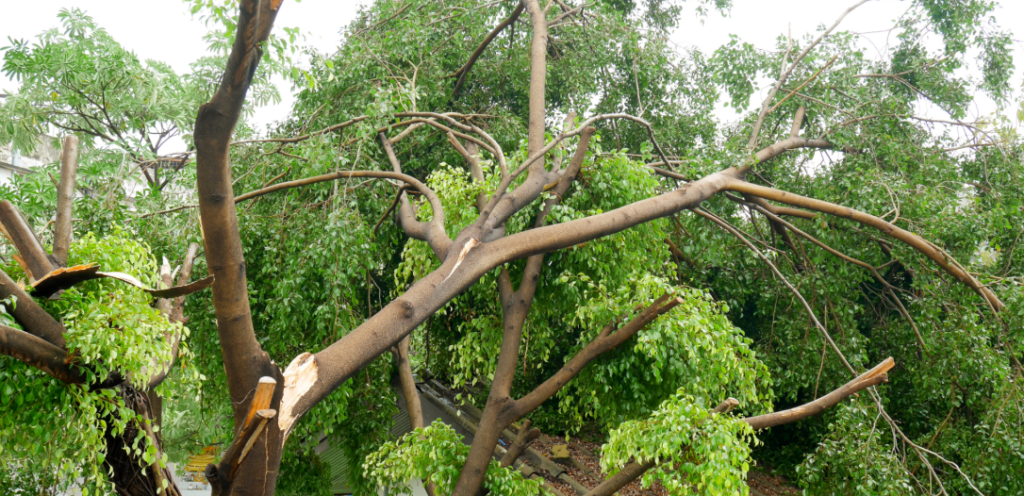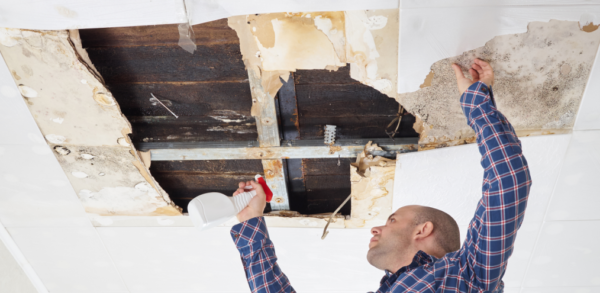 Your roof is a critical part of your home’s structure, and any damage caused to it should be repaired quickly. If the damage was caused by a storm, natural disaster, or another sudden event, the cost of fixing the roof could be covered by your homeowner’s insurance policy. Understanding roof damage and how this is covered can increase your settlement amount dramatically.
Your roof is a critical part of your home’s structure, and any damage caused to it should be repaired quickly. If the damage was caused by a storm, natural disaster, or another sudden event, the cost of fixing the roof could be covered by your homeowner’s insurance policy. Understanding roof damage and how this is covered can increase your settlement amount dramatically.
That’s good news, considering that the average roof replacement costs $24,700 for an asphalt shingle roof and $40,318 for metal roofing.
Several factors can determine whether or not your roof damage is covered. For starters, the damage must have been caused by a covered “peril” named in your policy. Read the language of the policy closely to determine what is covered, by how much, and what common exemptions might apply.
If the insurance company denies you, don’t give up hope. Reach out to experienced property damage lawyers near you. The attorneys at Steinger, Greene & Feiner are familiar with the strategies insurers use to avoid paying what a claim should be worth.
Learn more about your rights as a policyholder and what legal strategies you could be using to increase your chances of having all of your roof damage covered. Call us today at (800) 431-6841 or contact us online to schedule a free, no-obligation case evaluation.
You can use the resources below to learn how a roofing damage claim is typically handled and what factors might affect your ability to seek full coverage.
Only Some Causes of Damage Are Covered

The biggest thing to keep in mind is that not all forms of damage are covered.
Your roof is part of the structure of your home, meaning that coverage for its repair or replacement should be included within the dwelling coverage of your homeowner’s insurance policy. Understanding roof damage here will play a pivotal role in winning your case.
However, most homeowner’s policies have a limited window for what sources of damage can be covered. These limitations are usually declared in a “named peril” part of the policy.
Common named perils that can cause covered roof damage include:
- Felled trees
- Wind storms
- Lightning
- Fire
- Vandalism
- Falling debris
Always review the policy closely to see what situations should be covered. If you are having trouble understanding your policy or you are already in disagreement with the insurance company, speak to an experienced property damage lawyer near you.
What is never covered, however, is damage caused by the homeowner’s own failure to maintain their roof.
“Homeowners insurance generally does not cover damage resulting from lack of maintenance or wear and tear,” explains the Allstate Insurance Company. “Instead, it typically helps pay to repair sudden, accidental damage.”
Many policies may also exclude certain types of storm damage or only offer coverage with a high deductible. Hurricane winds, hail, floods, and earthquakes are all common perils that are either excluded or that come with a higher-than-usual deductible.
Document the Damage Before You Do Anything Else

Your first step after your roof has been damaged is to ensure the safety of household occupants and then the house itself. If the damage is related to fire, evacuate immediately and call the local fire department. If the damage is related to some form of criminal activity, report the incident to 911.
You may need to take additional steps to protect the structure of your home once the damage has occurred. For instance, you may need to shut off electrical lines that are routed through the attic if the damage is severe enough to cause an electrical fire. Find a contractor with an intimate knowledge and understanding of roof damage to help with repairs if necessary.
After taking immediate steps to protect your family and your home, take photos of the damage as soon as it is safe to do so.
Ideally, you will have documentation of the exact state of the home immediately after the damage occurred. For example, before removing a tree or covering the damaged sections in a tarp, take photos from multiple angles.
Again, only begin documenting the damage once it is safe to do so. If a storm is still raging outside or the property is unsafe to inhabit, wait until the danger has been abated.
Notify the Insurance Company
Chances are, your policy has a very short time frame in which you are expected to report the damage. Many policies have a 10 to 14-day window to give notice of a possible claim.
When talking to insurers, be careful about what you say. Avoid making statements that can sound like you’re accepting partial blame for what happened. Decline to make a specific estimate as to the scope of the damage until it has been examined by a professional inspector.
Reviewing your policy before you call is always a good idea, as is making a list of the damage types you need covered. Again, you don’t need to get into specifics about what is and is not damaged, but you do want to notify the insurer of a possible claim for every relevant coverage area.
Cover Up the Damage ASAP
As soon as photos have been taken of the initial accident scene, begin taking steps to prevent further damage to your home.
Know that any additional damage inflicted on the home by sloppy repairs or an inability to protect the structure will likely not be covered. As such, you want to be careful and thorough.
If you feel comfortable making repairs on your own, save the receipts for any materials used, as these may be covered by your homeowner’s policy in addition to the eventual, professional repairs.
If you don’t feel confident getting on the roof and applying tarps or plywood, contact a local handyman. Ask them to make the minimal repairs needed to cover the damage, protect the home, and essentially stabilize the situation until you can get an estimate for complete repairs.
Repair or Replace?
 Your insurance company will want to make the best financial decision when it comes to whether your roof should be repaired in part or replaced entirely.
Your insurance company will want to make the best financial decision when it comes to whether your roof should be repaired in part or replaced entirely.
If the damage is extensive, it may make more sense to completely redo the roof, since components that aren’t visibly damaged may still be more likely to fail in a short time window. If your roof is older (but still within the covered policy window), then they may opt for a full replacement. Understanding roof damage here could make or break your ability to negotiate.
Another scenario where the entire roof may be replaced is if you are unable to find matching materials, such as if the same type of shingles you had are no longer commercially available.
Know that the goal of the insurance company is to restore the roof to its prior condition before the storm, to the extent possible. As such, don’t expect them to cover any modifications to the original roof’s design.
The insurer will also only want to remedy the damage that compromises the structural integrity of the home. If the damage is purely cosmetic, then they will be likely to deny coverage for repairs.
Don’t Get Taken Advantage of by Insurers, Work With Experienced Property Damage Attorneys!
Steinger, Greene & Feiner is intimately familiar with the claims process, including common strategies insurers will use to reduce coverage – or claim that you don’t deserve coverage at all!
We will use our experience, knowledge, and resources to document your damages, research the details of your policy, and help you form a strong basis for requesting the maximum coverage possible.
Find out how you can stand up to insurance companies and assert your rights during a free, no-obligation case review. Schedule your free appointment now when you call (800) 431-6841 or contact us online.
